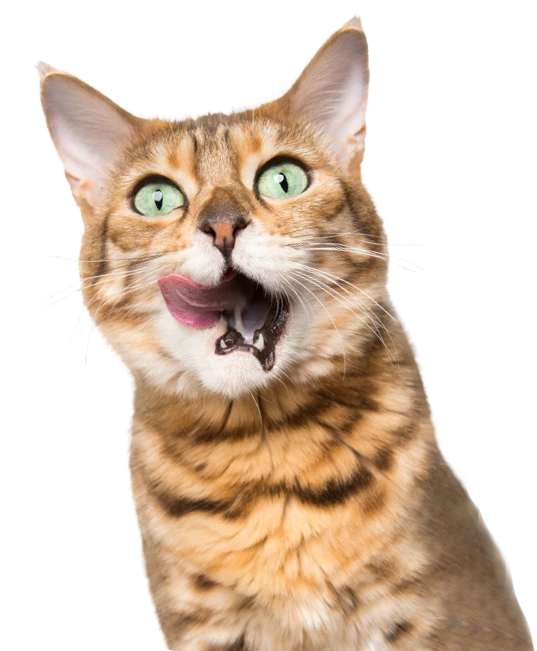Ready to help treat your pet to a healthy life?
A Guide to Spitz Dog Breeds
By : Kathleen Crampton | Published Sep 23, 2025
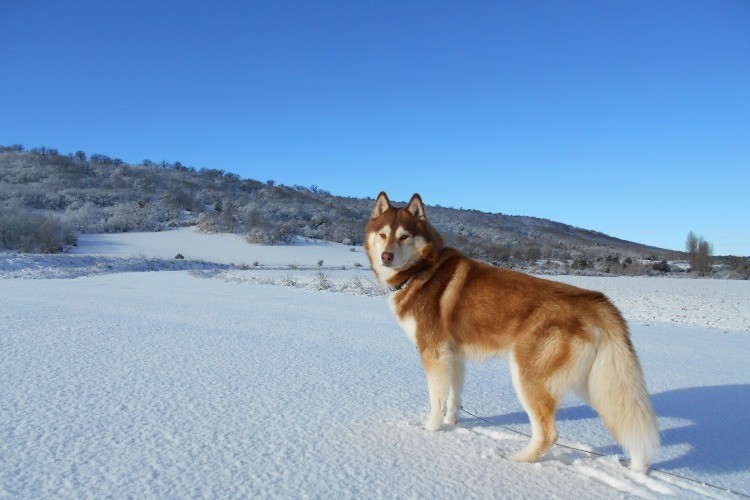
Is there anything cuter than a pup with a fluffy coat, curled tail, pointy ears, and a friendly face? These are all traits of what’s called a “spitz breed,” which is one classification of several varieties of dog breeds that share similar characteristics. Discover the different types of spitz dogs and find out more about each pup’s history, physical and social traits, and what makes them extra special.
What is a spitz breed?
Spitz dogs aren’t one recognized breed; rather, the term spitz encompasses many types of breeds that share similar characteristics. While the history of spitz dogs varies by breed, many were originally bred to be working dogs. They hail from all over the world, primarily in cooler regions where their thick double coats can protect them from the cold.
The German word “spitz” roughly translates to “point” or “peak.” This is why spitz dog breeds are classified as such — because their ears are pointy. But other physical characteristics for these breeds include double coats, furry tails that curve over the back of their body, and almond-shaped eyes. Many of these dogs have a wolf-like appearance.
Because they were historically bred to work, many spitz dog breeds are intelligent, hard-working, and active. They can be wonderful dogs to welcome into your home, but pet parents should be aware that they can have quite the independent streak!
10 types of spitz dogs
The American Kennel Club (AKC) estimates that there are a whopping 50 to 70 spitz breeds, but it officially recognizes only 16. The Canadian Kennel Club (CKC) and the Kennel Club of the UK also recognize varying numbers and types of spitz breeds. We won’t cover every one here, instead focusing on a mix of some of popular and less common breeds that you might not have known were considered spitzes.
1. Alaskan Malamute
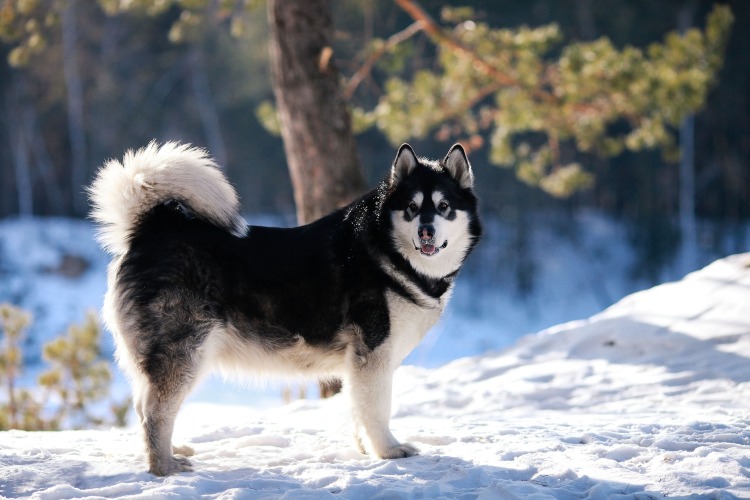
No, it’s not a Husky — it’s an Alaskan Mal! With a double coat, pointy ears, and a feathery, curved tail, Mals are one of the most recognizable types of spitz dogs. They love colder climates, ideally with snowy seasons and plenty of wintry activities where they can expend their energy without overheating.
These are super sturdy, plush, well-built dogs made for hard work. But they’re not all about toiling away. Alaskan Malamutes are known to be quite goofy, giving their owners (and anyone who will listen, really) a cacophony of “awoos” and other sounds if they’re feeling spunky.
2. Siberian Husky
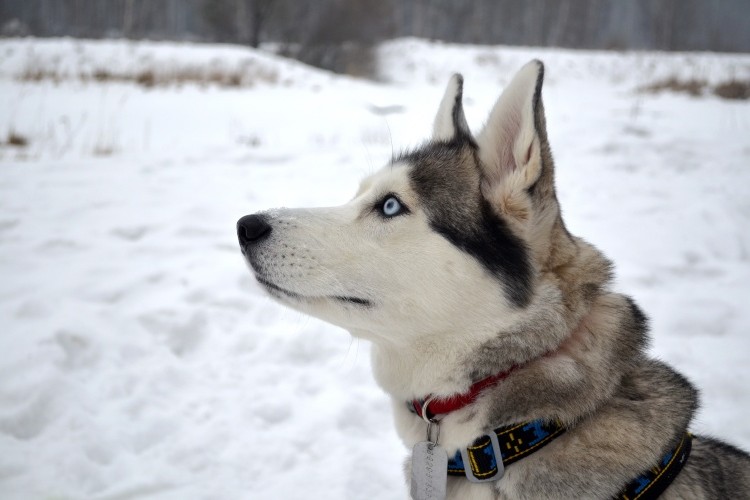
Not to be confused with Alaskan Malamutes, Siberian Huskies are the fourteenth-most popular dog recognized by the AKC. They have one of the most unforgettable faces of any dog, with a dark gray mask over the pointy ears and down to their gorgeous blue eyes (or oftentimes two different colors).
Also considered an Arctic sled dog breed along with Mals, the Siberian Husky was bred to work, transporting supplies and resources across the tundra, protecting their humans, or participating in sled-dog races (also known as mushing). Siberians are smaller than Alaskan Mals, with shorter coats. But they share the same love of cold weather and hard work.
3. German Spitz
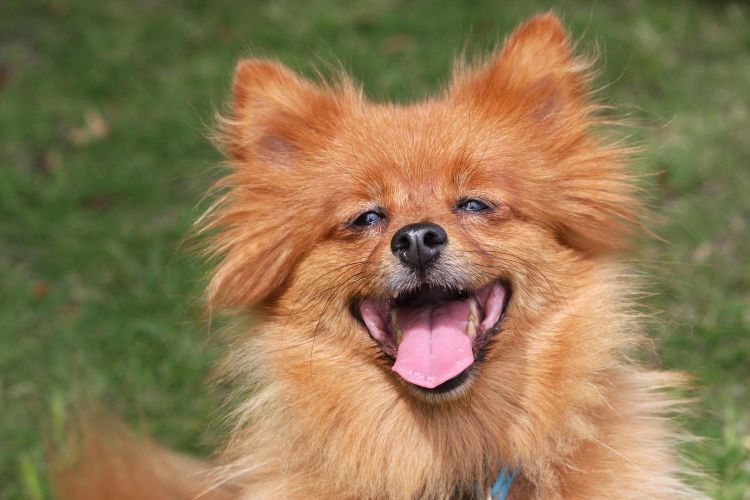
We’d be remiss to talk about the types of spitz dogs without mentioning the German Spitz. Considered one breed with different varieties in Germany, registrations in other countries recognize these different varieties separately (like the Pomeranian). German Spitzes are considered one of the oldest breeds in Central Europe, originally working as farm dogs and protecting their families.
Although the German Spitz itself is not officially recognized by some organizations due to rarity and a lack of parent clubs, the AKC has had it listed on its AKC Foundation Stock Service since 1996. Kennel clubs that do recognize the German Spitz and its varieties include the United Kennel Club and the Fédération Cynologique International, both international registries.
4. Pomeranian
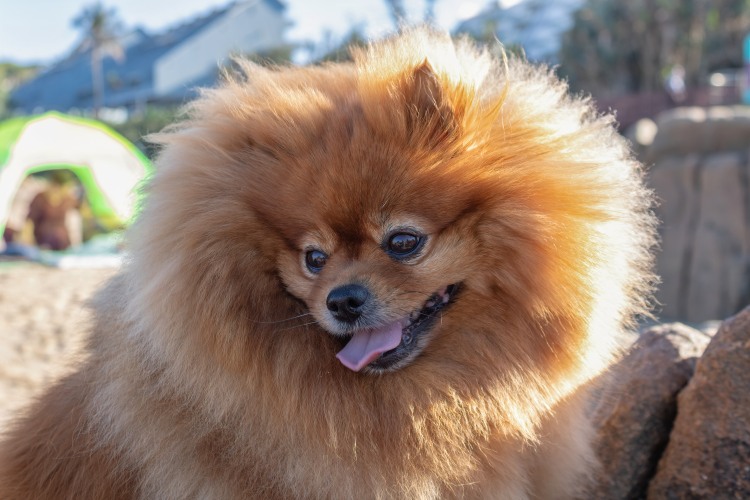
A direct descendent of the larger German Spitz (and even considered a variety of the German Spitz breed in Germany, called a Toy Spitz), the Pomeranian has been recognized as its own official breed by the AKC since 1888. Always looking perpetually spirited and happy, these cute fluffballs have tufted, pointy ears and a lion-like ruff around their chest and neck. While they’re no doubt adorable, Poms are also quite spunky, with larger-than-life personalities packed into a tiny frame. Weighing in at only 3 to 7 pounds (1.3 to 3.1 kilograms), Pomeranians are some of the cutest companions, making them one of the most popular toy breeds.
5. Pomsky
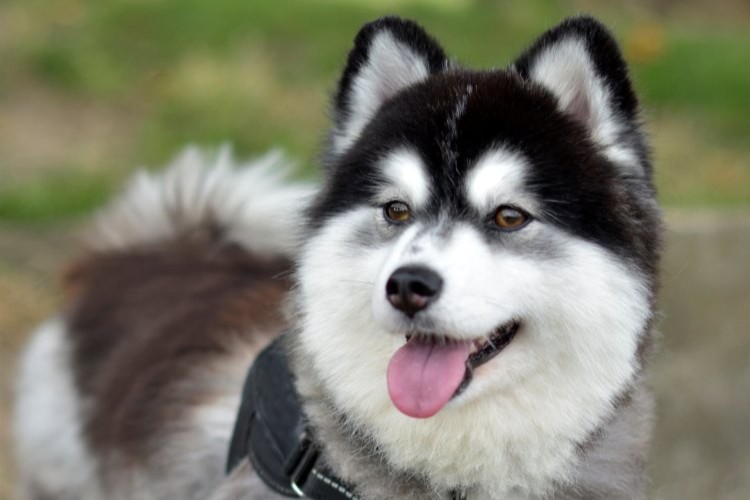
What makes a Pomsky? A Siberian Husky and a Pomeranian, creating a striking, pint-sized version of two popular dog breeds. Pomskies can have standard coats that are short like a Husky’s, a medium-length plush coat, and even longer wooly coat. Despite some physical differences depending on the generation and the genetics of the parents, Pomskies typically have similar markings as a Siberian Husky but with the smaller size of Pomeranians. As you might assume, Pomskies are just as energetic as Huskies and Poms, making them a good fit for active families.
Pomskies aren’t a recognized breed by many organizations just yet, but the American Pomsky Kennel Club is working toward official recognition through ethical breeding standards.
6. Samoyed
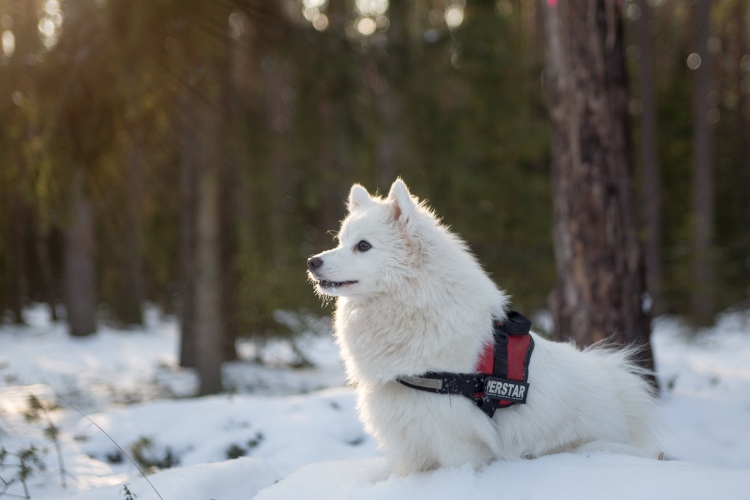
Fitting right in with other types of spitz dogs made for cold weather, Samoyeds are sled dogs hailing from Arctic regions near Siberia. Samoyeds, known familiarly as Sammies, have a striking presence, with their all-white fur, fluffy coats, pointed ears, and grin (called the “Sammy smile). Fun fact: Their upturned mouths aren’t just for the smiles; they actually keep Samoyeds from drooling and developing icicles in the frosty winter air!
Samoyeds are generally smaller than Siberian Huskies and Alaskan Malamutes but share a similar work ethic, energy levels, and amiable personality.
7. Shiba Inu
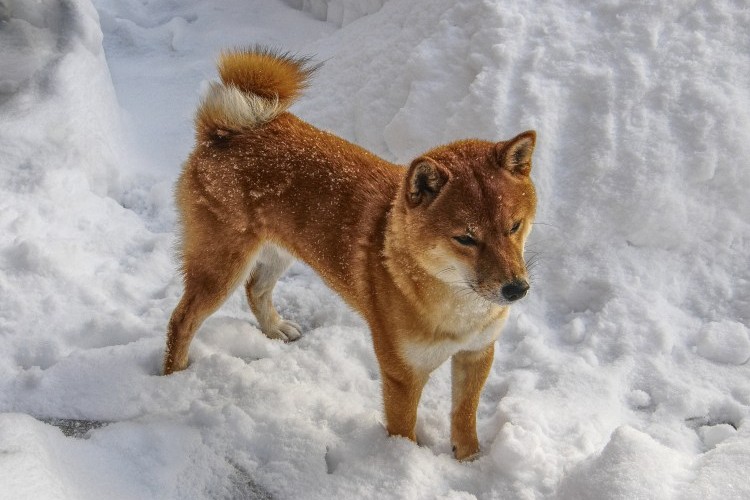
Considered one of the oldest dog breeds, Shiba Inus are thought to have first come on the scene around 7000 B.C. Then, in approximately the 7th century A.D., the royal court in Japan mandated that six native breeds be deemed vital to the culture, including the foxlike Shiba Inu and a related, larger spitz-type breed, the Akita Inu.
Although Shiba Inus have a rich history and cultural significance in Japan, they have only more recently been introduced to North America, the first-known dog being brought to the United States in 1954. Ask any pet parent, and they’ll tell you that their Shiba Inu is a wonderful companion — protective and vigilant but also adaptable and affectionate.
8. Icelandic Sheepdog
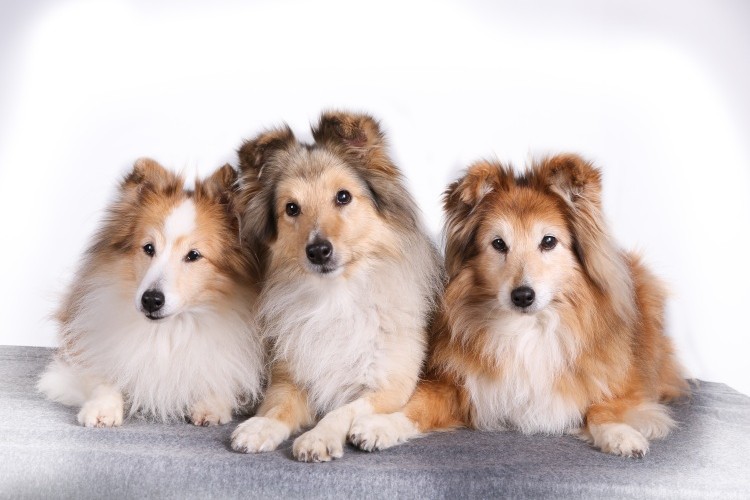
If you’re looking for a dog that is lovey-dovey, playful and gentle with kids, and highly trainable, an Icelandic Sheepdog might be the right pup for you! Considered a midsize breed, Icelandic Sheepdogs only reach up to 30 pounds (13.6 kilograms) and 18 inches tall (45.72 centimeters), making them a perfect addition to any adventure — of which they’ll need many to counter their high energy.
Although Icelandic Sheepdogs originally came from Norway, they began their rich history of herding sheep and guarding fields in Iceland. The official breeding program began in the mid-1960s, and researchers believe that the current global population of Icelandic Sheepdogs directly descends from the few selected for breeding from that time.
9. Japanese Spitz
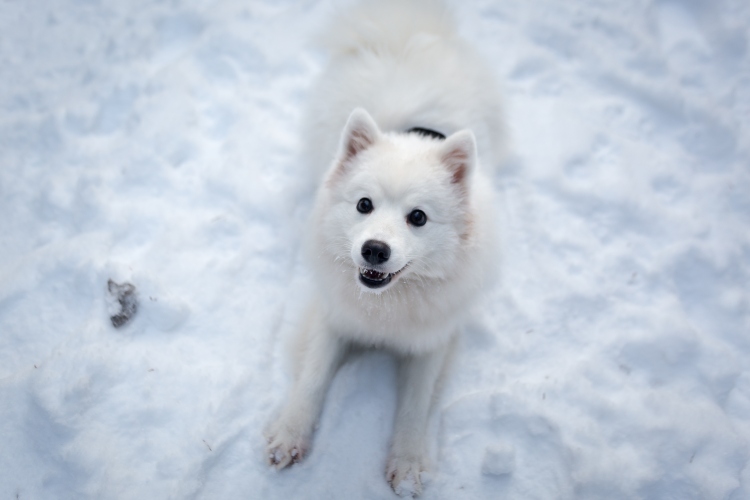
A relatively newer breed, Japanese Spitz is thought to be descended from the German Spitz, which was brought to Japan in 1920. Japanese Spitzs, like other types of spitz dogs, are playful, loving and loyal, and need ample exercise and mental stimulation to keep them healthy and out of mischief.
These gorgeous hounds sport coats of all-white fur without any other markings, so good luck spotting them in the snow! But with a fluffy double coat comes higher maintenance, as these Spitzes shed twice a year and require frequent grooming. This is an important part of any pet parent’s routine, as coat maintenance can help prevent matting and certain skin issues. Dog insurance is always a good idea, though, to ensure that your pup can get the treatment they need for any unexpected issues.
10. Finnish Spitz
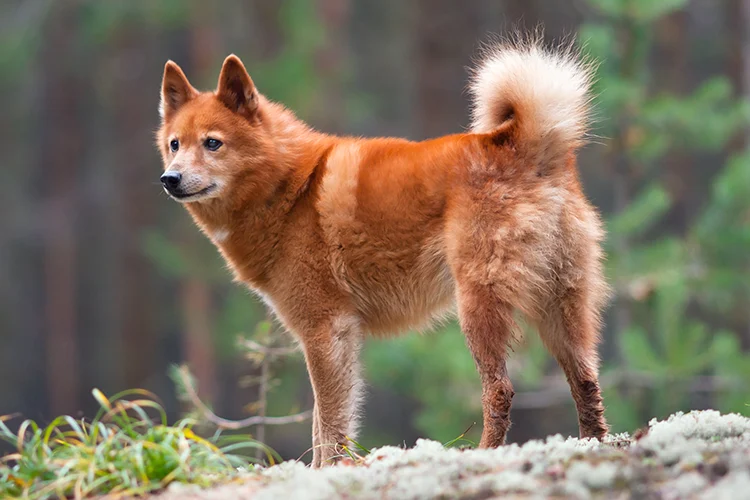
The final spitz on our list is the Finnish Spitz, also known as the Barking Bird Dog. This hardworking dog can clock up to 160 barks in one minute, all in an effort to alert a hunter of a bird up ahead. But the breed, like other spitzes, is also perfectly content in their companion role, giving their pet parents a cozy cuddle and always preferring to be by their side.
Finnish Spitzes have a fox-like appearance, with red-gold coloring, a square-shaped face, and the quintessential pointy ears. They’re a beautiful, affectionate dog to add to any pet-loving family.
Interested in learning more about other breeds? Check out our dog breed guide.